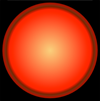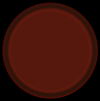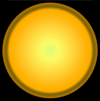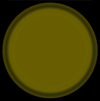Light the lights
Investigate which numbers make these lights come on. What is the smallest number you can find that lights up all the lights?
Problem
Here is a machine with four coloured lights. Each light responds to a rule.
When you type in a number, lights go on if their rule is satisfied.
If the number satisfies more than one rule, then more than one colour will light up.
Type in some numbers and see which lights you can switch on.
Do you get any surprises?
What are the four rules? How do you know?
Is it possible to light up all four lights at the same time? Why or why not?
Getting Started
How will you keep track of what happens with each number you try?
You might find a hundred square useful.
Student Solutions
Well done to everybody who worked out which rules made the lights turn on. We were sent some solutions which just described the rules for each light, but we've focused here on the solutions that explained in more detail what was going on.
Anya from GSS explained how they approached this activity:
There are 4 different types of lights. They are yellow, red, blue and green.
There are different types of rules for each light, which causes it to light up:
Yellow- When the number is bigger than the number 100
Red- When the number is divisible by the number 5
Blue- When the number is odd
Green- When the number is bigger than 4
There were some numbers with multiple lights, some with none and even some with all the lights lit up.
No Lights- 2,4
All Lights- 105,115,125,135,145
Multiple Lights- All the rest!
Solution-
The way I did it was after seeing all 150 numbers, I went to the table and compared each light with the number it matches with. I noticed lots of numbers being lit up, with each having its very own special rule!
I also used the line graph to see all the numbers on a line, and saw lots of yellow and green lights.
Lamu from Headstart International School in Phuket, Thailand noticed some patterns in the numbers, and found a number that would light up all the lights. This image can be clicked on to enlarge it:

Polina from Headstart International School found some similar rules in their lights:

Josh from Patterson Elementary in the USA explained why all four of the lights would never be on in their interactivity:
Four rules:
1. Yellow is always on
2. Red is on for odd numbers
3. Blue is on for even numbers
4. Green is on for all multiples of 10.
It's not possible to have all 4 of them on because a number can never be both odd and even!
We received a lot of solutions from the students at Ganit Kreeda in Vichar Vatika, India. Ruhi also found some cases where the lights could never all light up at the same time:


It certainly seems like the odd and even rules often make it difficult to light up all the lights at once. Avic also found an example which involved both odd and even numbers, and they gave a similar explanation:
Y: No. above 50
R: Even no.
G: Odd no.
B: No. under 5
It can not come because there is not a no. that can be an on and even no. at the same time.
Avic then found another example in which it was possible to light up all the lights at the same time:
Y: Even no.
B: All no. before 30
R: All no. before 50
G: Multiples of 5
Yes, at 0 because it is under 20 and 60, it is an even no. and it is in the table of 5.
Have a look at Avic's full solution to see more of their ideas about this.
Aarav found a different reason why their lights wouldn't all light up at the same time:


Reyansh noticed something interesting about prime numbers:
Q.1: What are the four rules? How do you know?
Yellow: table of 6, red: even, blue: table of 7, green: prime
Q.2 : Is it possible to light up all four lights at the same time? Why or why not?
No because 6 is not a prime number so then prime numbers and a table of 6 can not go together.
It certainly looks as if lights which light up on prime numbers and lights which light up on composite numbers can never light up together. I wonder which of Reyansh's lights could light up at the same time?
Thank you as well to the following children who sent in similar solutions to this activity: Charlie from Kilmore in Ireland; Simon, Thep and Dodo from Headstart International School; Mrunmayee, Kanna, Ishaan, Advaya and Ananya from Ganit Kreeda; and Nina, Maya, Archie, Xave, Al and Sas from Clifton Hill Primary School in Australia.
Teachers' Resources
Why do this problem?
Possible approach
- Odd numbers
- Numbers bigger than 20
- Multiples of 10
Key questions








